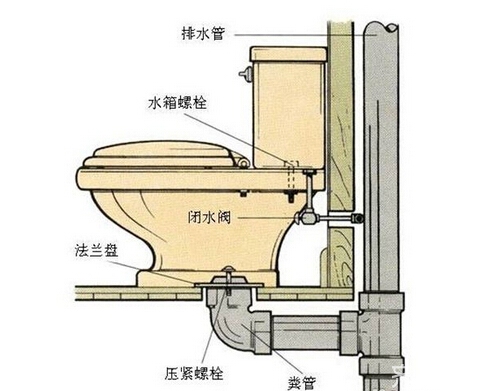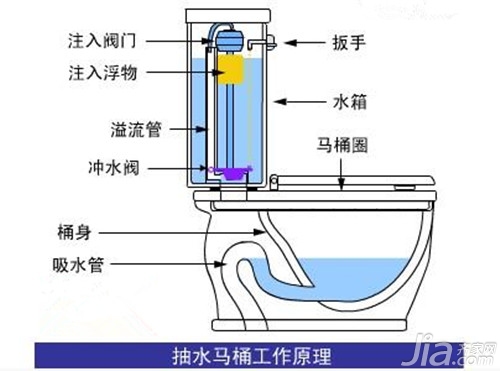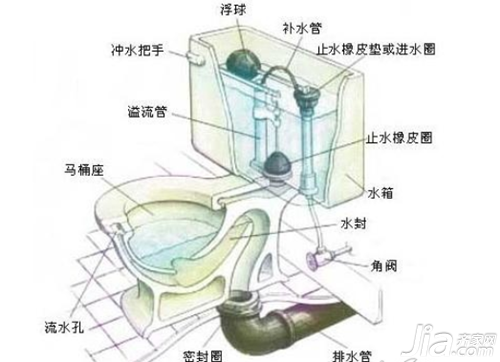The toilet is a fixture that we all use every day, yet most of us don’t really understand how it works or what its internal structure looks like. Today, we’re going to take a closer look at the toilet structure diagram to help you better understand its components and how they function. Knowing this basic information can be helpful if your toilet develops an issue at home, as it allows you to identify and address problems more effectively. Understanding the toilet’s inner workings is actually quite simple, and even a quick glance at the tank can reveal a lot.

From the toilet structure diagram above, you can see the main parts of a standard toilet: the inlet pipe, outlet pipe, siphon tube, water valve (both inlet and outlet), float ball, flush handle, and the lever mechanism. Each of these components plays a specific role in the flushing process. It's important to understand how they work together to ensure the toilet functions properly.

After examining the toilet structure diagram, you should have a clearer idea of how the toilet operates. When you press the flush button, it lifts the flapper valve via the lever, allowing water from the tank to flow into the bowl. As the water level drops, the float lowers, which then pulls the flapper back down to seal the outlet. At the same time, the fill valve opens to let water back into the tank, readying the toilet for the next flush.

Looking at the toilet structure diagram, do you feel more informed now? The "siphoning" action of the toilet refers to the S-shaped bend beneath the bowl. When the water level in the bowl rises above the high point of the S-bend, a siphon effect is created, which helps to pull both water and waste out of the bowl. Once the water level drops below the bend, the siphon breaks, leaving a small amount of water that acts as a seal to prevent odors from coming back up.
Common Causes of Toilet Clogs
1. A foreign object blocking the flushing pipe can cause poor water flow and prevent the toilet from flushing properly. In such cases, first check if the sewer line is clogged. If it is, it may be necessary to call a professional plumber to clear the entire sewage system.
2. If the blockage consists of materials like paper or dirt, try flushing more water to break it down. For grease buildup, pouring hot water into the bowl can help melt the blockage.

3. Pipe cleaning solutions can be used for substances that are acid-soluble. These products can dissolve rust or metal deposits inside the pipes. However, always follow the instructions carefully to avoid damaging the plumbing.
4. For minor blockages, tools like a plunger or auger can often clear the problem. These are commonly used for household toilets. If the clog is deeper or more severe, consider using a specialized drain snake or contacting a professional for assistance.
Summary: By learning about the toilet structure, you’ve gained valuable insight into how this essential fixture works. Understanding the basics can make troubleshooting easier and more efficient. We hope this guide has been helpful to you. For more home improvement tips and updates, be sure to visit our site regularly.
More articles:
How to choose a toilet
Roca toilet shopping guide
Vero ecological brick
Yinjing shower room product recommendations
What, are you still paying for your renovation out of your own pocket? The Qi family offers installment payments with an ultra-low annual interest rate of 3.55% and a maximum loan of 1 million. Apply now and enjoy special discounts!
If you're interested in brand collaborations, content partnerships, or advertising on this website, please send an email to:
Toilet tiles price, LD tiles
Three-Layer Steel Stretching Pot
Steel Pot,3 Ply Stainless Steel Cookware,3 Ply Steel Cookware
Jiangmen Vanky Stainless Steel Products Co., Ltd. , https://www.vankystar.com